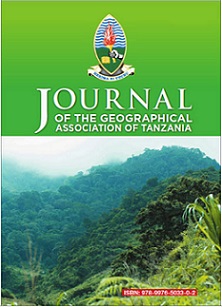Socio-economic and Cultural Practices of Land Tenure Systems on the Slopes of Mt. Kilimanjaro, Tanzania from 1920 €“1950s
Abstract
Land is an important asset by both rural and urban residents. It provides opportunities for various development options in almost all spheres of life. In this case, land tenure foregrounds how particular pieces of land are utilised and developed different from others. This paper traces and discusses the social, cultural and economic constructions of two major land tenure systems; kihamba and shamba, that exist on the slopes of Mt. Kilimanjaro. The paper shows that the tenure system on the slopes of the mountain influences the socio-cultural and economic affiliations of the Chagga and determines agricultural land uses. Agricultural and other economic activities on the kihamba and shamba reflect both tenure types and the socio-cultural constructions of the environment. The highlands and lowlands are historically perceived to serve different yet related functions to the people. More discussion will be on the kihamba tenure system because it roots deeper into earlier settlements on the slopes than the recent shamba system that started in the 1950s. This paper is based on a research work that included review of archival sources, fieldwork interviews conducted on the slopes of Mt. Kilimanjaro, and various secondary sources. The available evidence helps to argue that the nature of settlement and agro-practices on the slopes of Mt. Kilimanjaro is not only determined by the provisions of the physical landscapes rather it results from a combination of factors. The paper examines how economic imperatives, coupled with the social construction of the physical space, influence patterns and nature of agrarian land use.
Keywords: land tenure, kihamba, shamba, land use, agriculture, Kilimanjaro.



